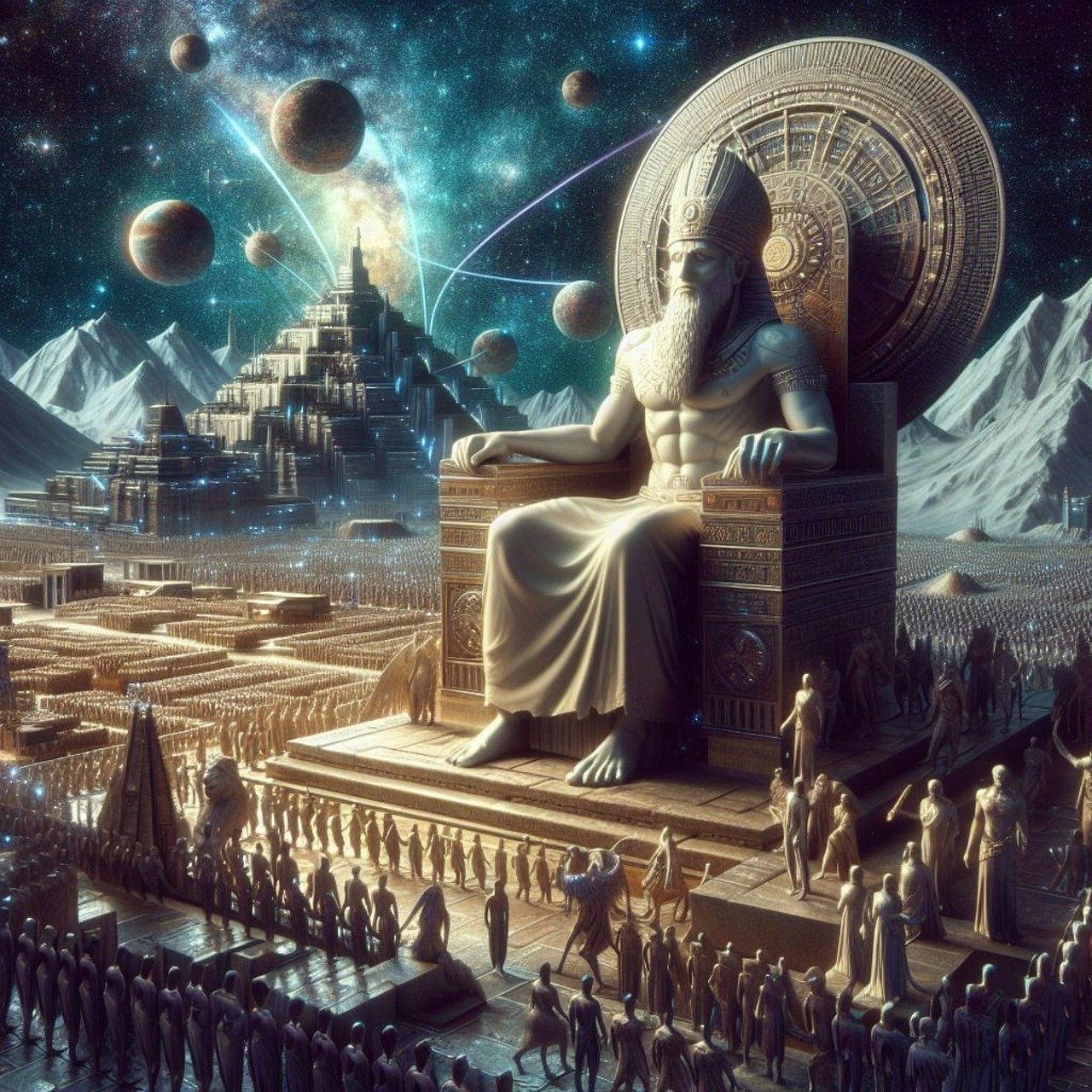
Part 1: The Anunnaki – Gods of Ancient Mesopotamia
The Anunnaki (also transcribed as Anunaki, Anunna, Ananaki, and other variations) are a group of deities who appear in the mythological traditions of the ancient Sumerians, Akkadians, Assyrians, and Babylonians. These cultures flourished in Mesopotamia (modern-day Iraq, Kuwait, and parts of Syria and Turkey) from roughly the 4th millennium BCE to the 6th century BCE.
Key Concepts and Interpretations:
Name and Meaning:
The name “Anunnaki” is generally translated as “those of royal blood,” “princely offspring,” or “offspring of Anu.”
“Anu” (or “An”) was the supreme god of the Mesopotamian pantheon, the god of the sky and heavens. He was considered the ancestor of the Anunnaki.
Role and Function:
The Anunnaki were considered powerful deities, often associated with fate, judgment, and the underworld. Their specific roles and powers varied across different texts and time periods.
In some accounts, they were depicted as the judges of the dead in the underworld.
In other accounts, they were seen as the creators or helpers in the creation of humanity.
They were often portrayed as a collective group, but individual Anunnaki deities also had their own distinct characteristics and responsibilities.
Relationship to Humanity:
One of the most well-known narratives involving the Anunnaki is the story of the creation of humanity in the Atra-Hasis epic (a Mesopotamian flood myth).
In this story, the Anunnaki were initially tasked with working the land and providing for the gods. However, they eventually rebelled against their hard labor.
To alleviate the Anunnaki’s burden, the god Enki (also known as Ea), with the help of the mother goddess Ninti (or Mami), created humans from clay, mixed with the blood of a slain god (often identified as Geshtu-E or We-ila).
Humans were thus created to serve the gods and perform the labor that the Anunnaki had refused.
The purpose of human life, according to many mesopotamian myths, was to serve Gods.
The Great Flood:
The Anunnaki also play a role in the Mesopotamian flood myths (such as the Epic of Gilgamesh and the Atra-Hasis epic).
In these stories, the gods, including the Anunnaki, decide to send a great flood to destroy humanity due to their noise and overpopulation (or other reasons, depending on the version).
The god Enki, however, warns a righteous man (Utnapishtim in the Epic of Gilgamesh, Atrahasis in the Atra-Hasis epic) and instructs him to build an ark to survive the flood.
Hierarchy and Key Figures:
The Mesopotamian pantheon had a complex hierarchy, and the Anunnaki were often placed below the highest-ranking gods (such as Anu, Enlil, and Enki).
Some of the most prominent Anunnaki deities (although their classification as Anunnaki can vary) include:
Anu (An): The sky god, father of the Anunnaki.
Enlil: The god of wind, air, earth, and storms. He was often considered the chief god after Anu.
Enki (Ea): The god of water, wisdom, magic, and crafts. He was a key figure in the creation of humanity.
Inanna (Ishtar): The goddess of love, beauty, sex, war, and justice.
Utu (Shamash): The sun god and god of justice.
Nanna (Sin): The moon god.
Ninurta: A god of war, agriculture, and hunting.
**Ereshkigal:**The Goddes of underworld.
Modern Interpretations and Controversy:
The Anunnaki have become a subject of considerable interest and speculation in modern times, particularly within alternative history and ancient astronaut theories.
Authors like Zecharia Sitchin have popularized the idea that the Anunnaki were extraterrestrial beings who came to Earth to mine gold and genetically engineered humans as a slave race. These are not accepted by scholar.
It’s crucial to distinguish between the ancient Mesopotamian understanding of the Anunnaki and these modern interpretations, which are not supported by mainstream archaeological or historical scholarship.
Summary:
The Anunnaki were a significant group of deities in ancient Mesopotamian mythology. They were associated with various roles, including judgment, the underworld, and the creation of humanity. Their stories provide insights into the beliefs and worldview of the ancient Sumerians, Akkadians, Assyrians, and Babylonians. The stories also show how old beliefs change through time.
